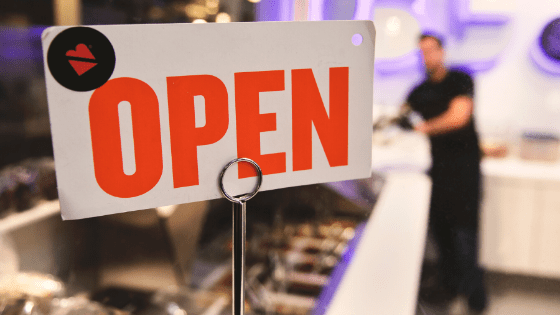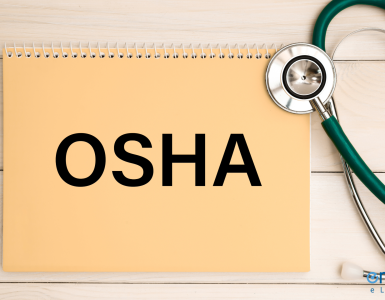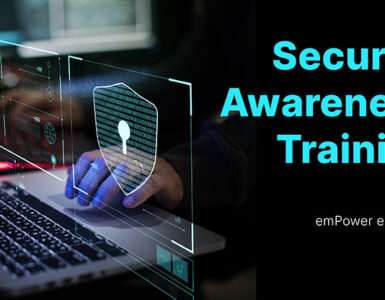The OSHA guidelines listed below are for businesses who plan to reopen in coming weeks. And, with the COVID-19 threat still looming high over businesses, it makes good sense to follow these guidelines.
If you are about to reopen your business, do not neglect the risk of COVID-19. Your ability of staying open depends upon you being able to keep your employees safe and healthy.
A safe and healthy workplace can reduce employee absences, increase productivity and boost the morale of people working for you. And, it would boost customers’ confidence in your business.
COVID-19 or the coronavirus disease is a respiratory illness. It can spread between people who are in close contact with one another; and through coughs and sneezes of an infected person. And, with no cures available, this pandemic could lead to increased absence of workers, disrupt your business, or force you to shut your shop.
Moreover, providing safe and healthful workplaces for your employees is your legal responsibility. You can be held liable under the Occupational Safety and Health Act (OSHA) of 1970.
How to protect your employees during the pandemic?
Here are the steps that you can take to protect your employees and prepare for disruptions.
COVID-19 Response plan
Your first step should be creating an infectious disease response plan. If you don’t have one, it’s about time that you prepare one. It would help you access the COVID-19 risks associated with different work stations and the tasks workers perform there.
Based upon CDC and OSHA inputs, here are the main points that you should consider when preparing your COVID-19 response plan.
- Identify your essential employees and business functions
- What are the critical supplies, products, and logistics necessary to maintain your operations
- How can you make your worksites and work hours more flexible
- Where, how and to what sources of coronavirus your workers might get exposed to
- What are the non-occupational risk factors for your employees, such as infection risks at home and in community
- What are your workers individual risk factors, such as their age and existing medical conditions
- How would you deal with significant disruption
- Controls necessary to address those risks
Also equally important, identify an employee who could act as a workplace coordinator. The employee would be responsible for COVID-19 issues and their impact on your business.
Use this hierarchy of controls map, when you are designing your COVID-19 response plan. This map has been used to achieve feasible and effective controls against such hazards.
Here is the list of controls from the most effective to the least effective control.
- Physically remove the hazard (Coronavirus)
- Replace the hazard
- Isolate people from the hazard
- Change the way people work
- Protect the people with personal protective equipment (face masks, shields, etc.)
General Safety Precautions against COVID-19
Here are the general worker safety tips for protecting your employees.
- Encourage employees to stay home if sick
- Encourage good hygiene practices, such as covering sneezes and coughs
- Encourage everyone to wear masks at all time
- Provide a place to wash hands. And, if that’s not feasible, provide them with alcohol-based hand rubs.
- Limit work site access to only those who need to.
- Establish flexible work sites (e.g. telework) and flexible work hours (staggered shifts)
- Encourage workers to keep six feet distance between themselves (Social distancing)
- Discourage workers from using other workers’ phones, desks, or other tools and equipment.
- Maintain regular housekeeping practices, including regular cleaning and disinfection of surfaces, equipment, etc. with EPA approved chemicals.
- Use EPA-approved cleaning chemicals from list N or those with labeled claims against the coronavirus.
- Follow manufacturer’s instructions for use of all cleaning and disinfection products.
- Encourage workers to report any safety or health concerns.
The above safety precautions apply to all businesses. But if you are in retail, logistics, or construction, you would have identified infection risks which are specific to your business in your COVID-19 response plan.
OSHA has released separate workplace safety tips for various businesses. The following section lists those safety precautions which haven’t been covered in the general safety precautions mentioned above.
Daily workplace safety tips for retail services
Whether you run a pharmacy, supermarket or and any other retail service, ensuring a 6-feet distance between people would remain your biggest challenge.
Here are some social distancing measures that you can implement at your shop
- Demarcate 6-feet distances with a floor tape in checkout lines
- Move workstations to create more distance
- Install plexiglass partitions between workstations
- Use alternative cash registers
Drive through window or curbside pick-ups can also help reduce direct contact between customers and your employees.
Here are some more safety tips from OSHA
- Provide employees and customers with tissues
- Have trash receptacles at easy reach
Most importantly, train your employees in recommended hygiene practices and workplace controls to prevent COVID-19 infections.
Safety precautions for pickup and delivery services
Here are four more safety precautions specific to pickup and delivery services.
- Have flexible work hours for your employees.
- Discourage direct contact between employees and customers. Leaving deliveries at loading docks or door steps is an excellent way of reducing person to person contact.
- Provide disinfectants and disposable towels to your drivers.
- Encourage your drivers to clean the vehicle interiors with disinfectants.
- Discourage your employees from using others tools and equipment.
OSHA guidance for manufacturing and construction industry
Here are the health and safety suggestions from OSHA for manufacturing and construction businesses.
-
- Encourage your employees to maintain 6 feet distance between themselves.
- Consider limiting the duration of jobs where managing such distances is a challenge.
- Put in place innovative distancing measures, such as moving work stations or installing plexiglass shields.
- Ensure social distancing measures are strictly followed when working within trailers
- Train your workers on proper usage of personal protective equipment
- Provide disinfectants and disposable towels that workers can use to clean surfaces.
- Keep a track of public health communications about COVID-19 recommendations and ensure that it reaches to all your employees.
During the last month, OSHA has also released several notifications addressing the usage and shortage of N-95 respirators too.
N95 Respirators
N95 respirators are industrial class respiratory protective devices known for their effectiveness s. They are very good at filtering air borne particles. N95s are mostly used in construction and other industrial jobs that expose workers to dust and small particles.
How to deal with limited supply of N-95 Respirators
With 90% of N95 Respirator production now going to healthcare workers, the supply of N95s is not even close to meeting the industrial demand. Considering this shortage of N95 respirators, OSHA has released multiple notifications to limit its impact on workplace health and safety.
Employers have been asked to reassess their processes – engineering controls, work practices, and administrative controls that could decrease their need for N95 respirators. OSHA has also allowed the use of alternative classes of respirators that provide greater or equal protection as compared to N95 respirators.
OSHA is also permitted the use of respirators certified under foreign standards, but only if above methods cannot fulfill the shortage of respirators. Here’s the list of the approved foreign standards.
- Australia: AS/NZS 1716:2012
- Brazil: ABNT/NBR 13694:1996; ABNT/NBR 13697:1996; and ABNT/NBR 13698:2011
- People’s Republic of China: GB 2626-2006; and GB 2626-2019
- European Union: EN 140-1999; EN 143-2000; and EN 149-2001
- Japan: JMHLW-2000
- Republic of Korea: KMOEL-2014-46; and KMOEL-2017-64
- Mexico: NOM-116-2009
Enforcement discretion over annual fit-testing requirements
OSHA has also agreed to exercise enforcement discretion when auditing for annual fit-testing requirements as long as the employers can prove that they have made a good faith effort to follow the respiratory protection compliance standards.
Usage of decontaminated respirators for Healthcare
Another OSHA notification released on April 24, allows employers to use decontaminated N-95 respirators if alternatives approved under their previous notifications are not available. Approved decontaminated methods are:
- Vaporous hydrogen peroxide
- Ultraviolet germicidal irradiation, and/or
- Moist heat (i.e., using an oven)
And, if the methods listed above are not available, microwave-generated steam or liquid hydrogen peroxide could also be used.
The following methods are still not considered as acceptable decontamination methods for N95 respirators.
- Autoclaving
- Dry heat
- Isopropyl alcohol
- Soap
- Dry microwave irradiation
- Chlorine bleach
- Disinfectant wipes, regardless of impregnation (i.e., chemical saturation), and/or
- Ethylene oxide
Do businesses need to record cases of Covid-19 illness?
Covid-19 is a recordable illness under the OSHA’s Record keeping requirements. They are required to record cases of COVID-19 if the employee gets infected while working. But, OSHA would not enforce the record keeping requirement, unless there is evidence that the illness is work related and the evidence was clear to the employer.
Healthcare, emergency response and correctional institutions would need to record all cases of COVID-19.
Enforcement discretion of Safety Standards
OSHA has also asked compliance officers to consider good faith efforts by employers, if they are found non-compliant with OSHA standards. Such non-compliance can attract heavy penalties. During inspections, compliance officers will consider good faith efforts towards compliance, under the following conditions.
- The enforcement discretion would apply to standards that need audit, review, training or assessments, but the necessary consultants or sub-contractors aren’t available for the purpose.
- Employers have considered the following alternative options
- Explore alternative options to follow the standards, like opting for online training
- Consider interim alternate protections
- Reschedule the required activity as soon as possible
- If the facility was ordered to shut by the authorities.
These are the important OSHA notifications released during April which could help small businesses to stay open during the COVID-19 pandemic. Do not forget, COVID-19 is still an ongoing threat. By following these standards, not only would you be protecting your employees, but it would also help reduce absences, improve productivity, and save money for your business.
If you have any queries regarding the above OSHA notifications, or you want to share your concerns regarding COVID-19, please share your views in the comment section below. Our readers would be delighted to hear from you.





